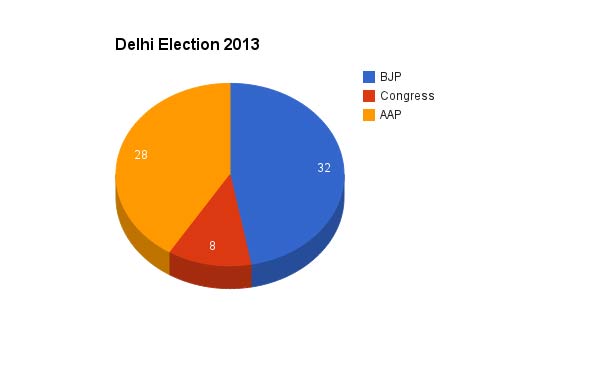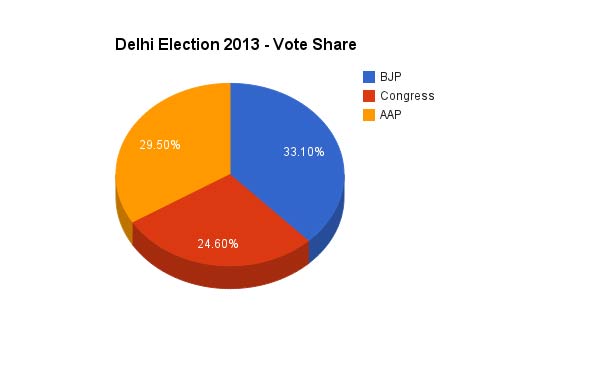
The Aam Aadmi Party (AAP) won a stunning victory in the 2015 Delhi Assembly elections, winning 67 out of 70 seats and thoroughly reversing a trend of unabated BJP wins in state elections over the past year. This is the biggest victory margin for any political party in Delhi since the first Assembly elections took place in 1993.
In the following piece, we have a graphical look at historical performances of major parties in all Delhi elections.
2015: 2015 will be remembered as the year that AAP stopped the BJP juggernaut in the national capital. The elections were finally held after almost a year of President's Rule in Delhi. In the initial phase of election campaigning, BJP looked to be heading for a comfortable majority according to all major surveys. As time went on however, BJP's lead began to decline. Even the naming of Kiran Bedi as CM candidate did not seem to help, instead alienating the old, homegrown guard in the BJP. Things changed to the extent that most exit polls just after the polling process was over predicted a simple majority for AAP. Nobody however, thought AAP would win 67 seats.
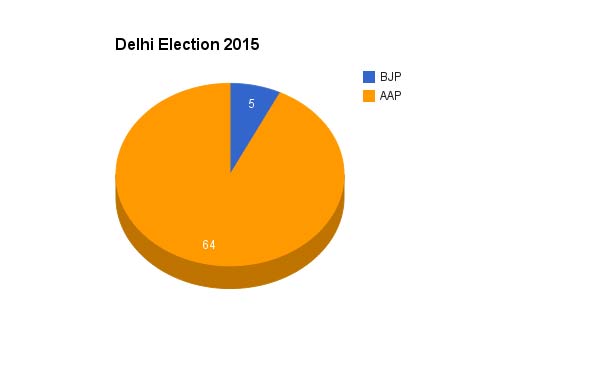
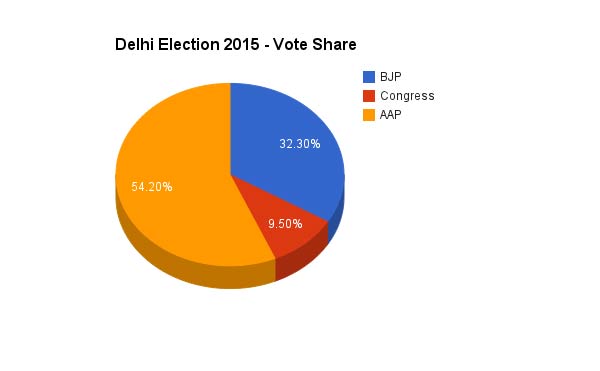
1993: BJP won the first ever state legislature elections in Delhi in 1993, winning 49 seats and 47.82% of the vote. The Congress was relegated to 14 seats while Janata Dal won 4 and Independents won 3 seats. Sahib Singh Verma became the CM of Delhi.
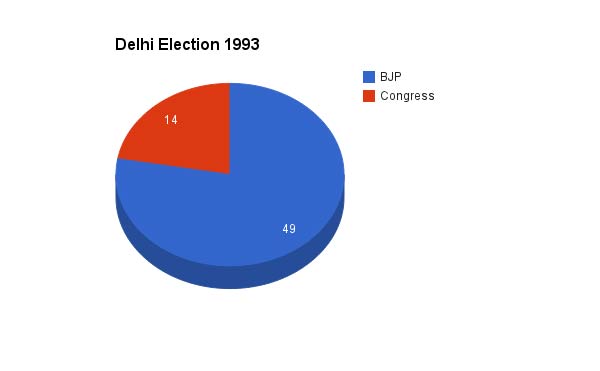
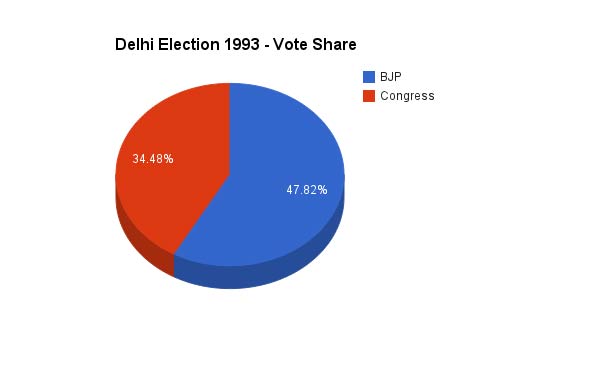
1998: The second legislative assembly elections of Delhi saw a turnaround in the fortunes of the BJP, which was unseated from power in the national capital. From 49 seats in 1993, BJP under Madan Lal Khurana in 1998 won just 15 seats, ceding 52 to the Congress. A major factor in BJP's loss was the drastic rise in the prices of onion. BJP, which has always had the support of the trading community, lost out badly to the Congress and Shiela Dikshit came to power.
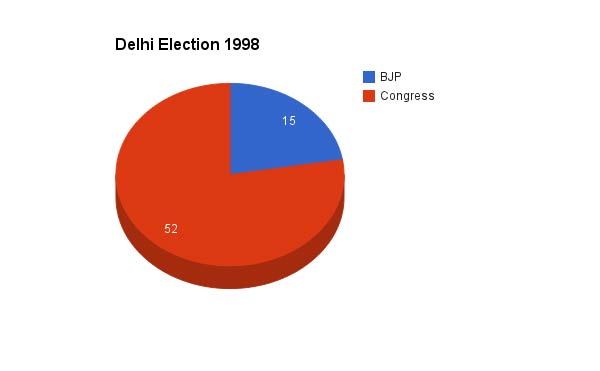
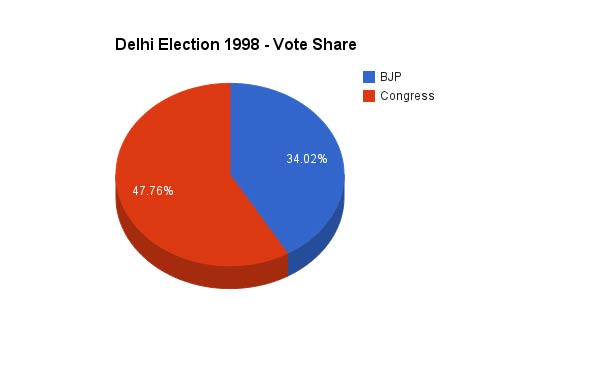
2003: BJP, led by Vijay Kumar Malhotra failed to win a majority in the state legislature, finishing with 20 seats as against Congress' 47. This was the start of Shiela Dikshit's second term as Delhi CM. It was an expected victory for the Congress, a pro-incumbency vote with rapid infrasturctural development being a major factor.
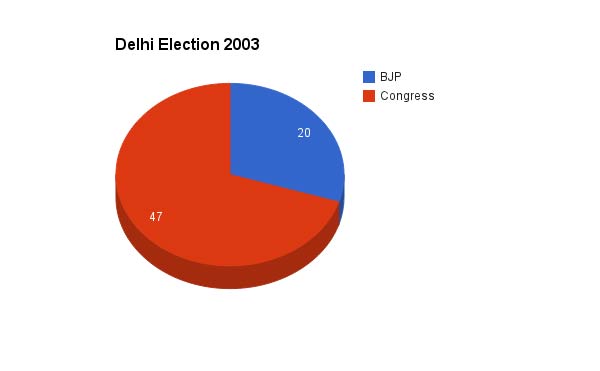
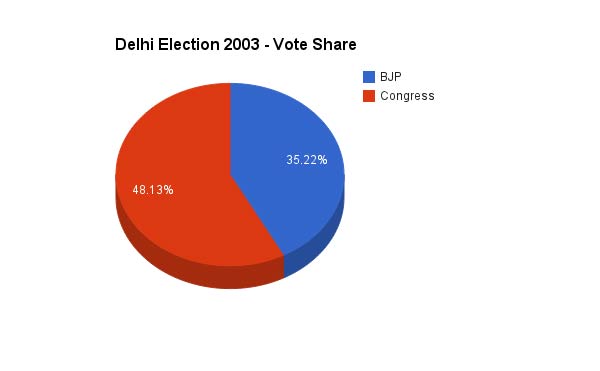
2008: Congress hegemony over Delhi continued for the third straight term in 2008 as the Grand Old Party finished with a simple majority of 43 seats, despite an anti-incumbency sentiment. BJP's CM candidate, the 77-year-old Vijay Kumar Malhotra, did not enthuse the voters enough to turn the tide. This was to be Shiela Dikshit's third and last term in power as CM. This was also the last election before the advent of the AAP.
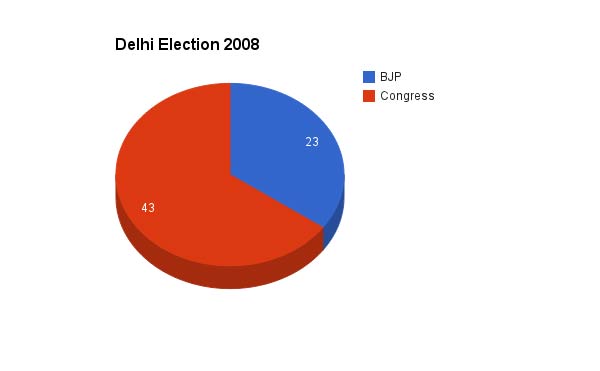
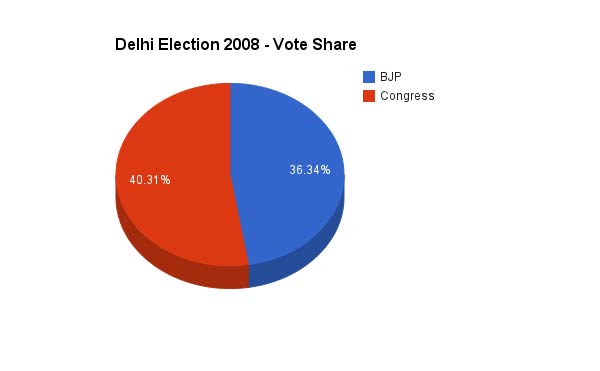
2013: The 2013 Delhi elections were a watershed moment in Indian political history as AAP, then a very new party created out of a people's movement, won 28 out of 70 seats in the state legislature. Exit polls had predicted single-digit seats for AAP, but Arvind Kejriwal's anti-corruption campaign touched a chord with the people of Delhi. But it was not the BJP which was the biggest loser in 2013. The Congress, incumbent at the Centre, won just 8 seats, relegating it to a poor third place in the Delhi legislature. It is another matter that Kejriwal resigned as CM after just 49 days, a decision he later apologised for.
